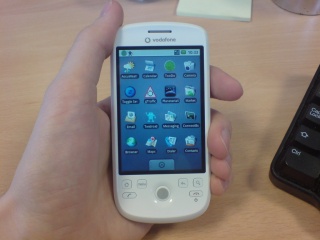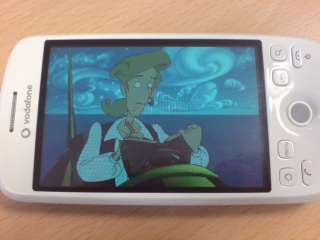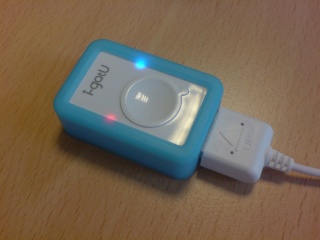Installing Ubuntu 9.10 from a newcomer's perspective October 19
As a long time user of Linux (10 years or so) I find it a much more comfortable and easier environment to work with than other operating systems.
Things like virus scanner alerts, malware, printer drivers popping up windows prompting you to download 75mb+ of drivers or being told your computer is going to restart due to an update and you can't do anything about it are completely foreign to me, to the point where I wonder how anyone who uses such an operating system gets anything done.
Despite this I find Linux fanboyism irritating and try my best to just let people use whatever they want to without lecturing them. It was seeing my girlfriend getting strange meaningless AVG anti-virus popups, being repeatedly nagged by HP to update her printer drivers and sighing as she was told her computer was going to restart after an update which she couldn't do anything about that I decided to get her to try a Linux distribution, Ubuntu 9.10 beta to be precise.
This, I hoped, would not mean she would 'see the light' and start yelling about how great Linux is, but rather that she would see her computer and operating system as what it should be - a tool she is in control of that lets her get things done.
As a bonus, it would also provide me with useful feedback of what newcomers come up against should they try a modern Linux distribution. From initial impressions, the installation itself was reasonably easy from my point of view, but a couple of issues encountered would have caused a newcomer to become completely lost.
The Good
- The CD booted no problems at all - a slightly unfriendly text based language selection screen was the first thing we saw, but after selecting "English" and going to "Install Linux" we were in nice graphical land again, although there was no onscreen indication the system was doing anything apart from a flashing CDROM drive light.
- The graphical installer loaded, mouse working and correct resolution determined. All the options reasonably easy to understand. Logical decisions made - setting the timezone / country to UK gave me a UK keyboard layout as the default.
- The partitioner was a little complicated, but some things can't be simplified further. The very fact you could drag bars about and resize an NTFS partition almost had me going "In MY day..."
- The system installed itself successfully with no errors and proceeded to tell us it was going to reboot, which it did.
- All the hardware worked out of the box - pretty impressive given the proprietary drivers needed for the Wifi.
- The 'encrypted home directory' option appears to work fine and unlocking of the encrypted volume is integrated into login, making it completely transparent to the end user.
The Bad
- Although we chose the UK timezone during installation, the system clock jumped forward an hour. As on reboot we chose to go straight back into Windows to reassure her that all her data was still there, I suggested she update the system clock to the correct time when she was there so Ubuntu would pick it up. We did this, but on rebooting into Linux the system wouldn't boot - it just stalled with the Ubuntu logo showing.
After rebooting and appending the kernel boot options to not show the splash screen I could see one of the partitions was failing a fsck as the modification time was in the future (because of the clock being set back an hour in Windows). A quick fsck on said partition and a reboot sorted this out and we were back in graphical land, but this would have been a complete show stopper for a newcomer. - The grub bootloader has too many options, some of which are confusing. I'm not going to go into the technical challenges of solving this, I'm simply going to state the problem. On booting we get several boot options. Linux, Linux safe mode, Windows (sda1), Windows (sda2).
The last two are very confusing. Most new computers with Vista come with a hidden partition to recover / reinstall the OS if it gets corrupted or needs to be wiped. Both these partitions are bootable and as such, if you choose the first Windows option, you'll boot into the manufacturers recovery system which could do things you don't want it to. Choosing the second Windows option actually boots you into Vista, but this is not at all obvious. - The brightness hotkeys don't work out of the box, but this is down to a BIOS bug which can be fixed by downgrading the BIOS as I have done on my (identical) laptop.
- Her Firefox bookmarks hadn't been copied over from Windows even though we selected to do so during the installation. This could be due to not having the same username in Windows as in Linux - I'm not sure how the installer goes about determining which Windows profile to copy the information from.
- It would be great to have an option to port over user installed TTF fonts from Windows as well. I'm not sure if there are technical or licensing issues that could arise, but people that have custom fonts installed will want to use them under Linux as well as Windows. As it stands, she has documents created in Windows that aren't displaying correctly due to missing fonts.
- The first thing she tried to do once I'd created a link to her Windows documents was to play some video clips. These played, but the player (Totem) crashed repeatedly when closing - not a great impression to start out with. It should be noted this is a beta release of Ubuntu though, and this might be fixed in the release version.
Overall, it went as well as I had hoped it would - though I didn't foresee the system clock problem and the resulting manual fsck. Once up and running she was able to enter our wifi connection details and happily installed the Firefox extensions she uses when in Windows. I'll show her Synaptic tonight and get the equivalent of her Windows apps set up on Linux - or rather, watch her do it and see what (if any) problems she comes up against.
HTC Magic Android phone May 5
My HTC Magic phone arrived the other day, running Android 1.5.
I'm currently waiting for my number to be ported from my old network before I can actually use it as a phone (no reviews I've read actually review how it performs as one). In the meantime I've been playing around with the other stuff it does. The current likes and dislikes:
Likes
- The screen is very nice - easily readable on 20% brightness, touch responsiveness is good. Probably not quite a smooth as the glassy iphone / ipod touch surface.
- The size - smaller than an ipod touch. A lot thinner / smaller than the G1 from what I've seen.
- On screen keyboard rotates with the screen - makes typing a bit easier.
- Battery life - seems adequate for a device with this much crammed in. Turning off wifi overnight means the battery drops by only a couple of %.
- Wifi connectivity - Stays connected and reconnects fine to my WEP network (needed for the CATaLOG bridge) - something my girlfriend's ipod touch seems unable to manage.
Dislikes
- Being unable to send files over Bluetooth. Seriously. WTF.
- The built in browser is a bit clunky - fit webpage to screen is badly implemented. Opera Mini doesn't seem to know about the onscreen keyboard in Android 1.5 yet and so is unusable.
- No multi-touch due to Apple patents.
- The mechanical rollerball a) feels like a deodorant bottle b) is not really needed and c) is just waiting to fill up with pocket fluff, etc.
Also managed to install ScummVM and now have The Curse of Monkey Island on my phone...
The IMAP email client seems to have improved since the G1 firmware but I still get connection errors every few minutes. I'll be interested to see what calling people and messaging them via SMS is like once the number gets ported.
i-gotU GPS tracker April 29
While CATaLOG allows me to see when my cats go in and out of the house and what their favourite time and day is, it doesn't actually let me see where they go. To remedy this, I bought an i-gotU GPS tracker. While the GT-100 (version 1) of this product got pretty negative reviews, the GT-120 version (version 2) seems to get better ones, and this is the one Maplin stocked for £40. Here it is:
I'm glad I've been alive long enough to remember times before GPS and mobile phones and still don't take them for granted. The whole package is smaller than a matchbox and contains a GPS patch antenna, a GPS receiver, a microcontroller, storage for up to 64,000 waypoints, firmware which not only controls the device but also stores config values and allows data to be pulled off the device, a USB interface and a lithium ion battery plus charging circuitry. Not to mention this tiny thing is computing where it is from signals sent from satellites 12,552 miles above it. Incredible.
The box / website states Windows support only, but happily there is a fairly new, actively maintained project called igotu2gpx which gives command line tools for Linux / MacOS X to pull the data off the device and translate it into a standard GPX format usable by sites like the excellent http://www.gpsvisualizer.com.
I've done a couple of test routes and it seems to be pretty accurate to within 5 metres or so. It's logging the data every 6 seconds at the moment (which gives around 8 hours battery life) but this can be increased or decreased depending on the application.
Once I've got a harness for the cats I'll be attaching it to them, probably overnight, to see what they get up to. :)


